Ultimate Guide to Choosing the Perfect Bird Feeder for Every Seed Type
How to choose the right bird feeder by seed type is essential for attracting the birds you want to see in your yard. Each bird species has its preferred food, and the feeder you select can make a big difference in how successfully you cater to them. Different seeds attract different bird species, and each type of seed is best suited to specific types of feeders.
In this blog post, we’ll guide you through the most common bird seeds—Sunflower, Safflower, Nyjer (or thistle), White Proso Millet, Shelled and Cracked Corn, Peanuts, Milo (or Sorghum), Golden Millet, Red Millet, Flax, and others, as well as Rapeseed and Canary Seed—and recommend the best feeder types for each.
Table of Contents
1. Sunflower Seeds: The Universal Favorite
Sunflower seeds are the most popular birdseed and attract a wide variety of birds, including finches, cardinals, jays, and woodpeckers. There are two main types: black oil sunflower seeds, which have thin shells and are high in fat, and striped sunflower seeds, which have thicker shells.
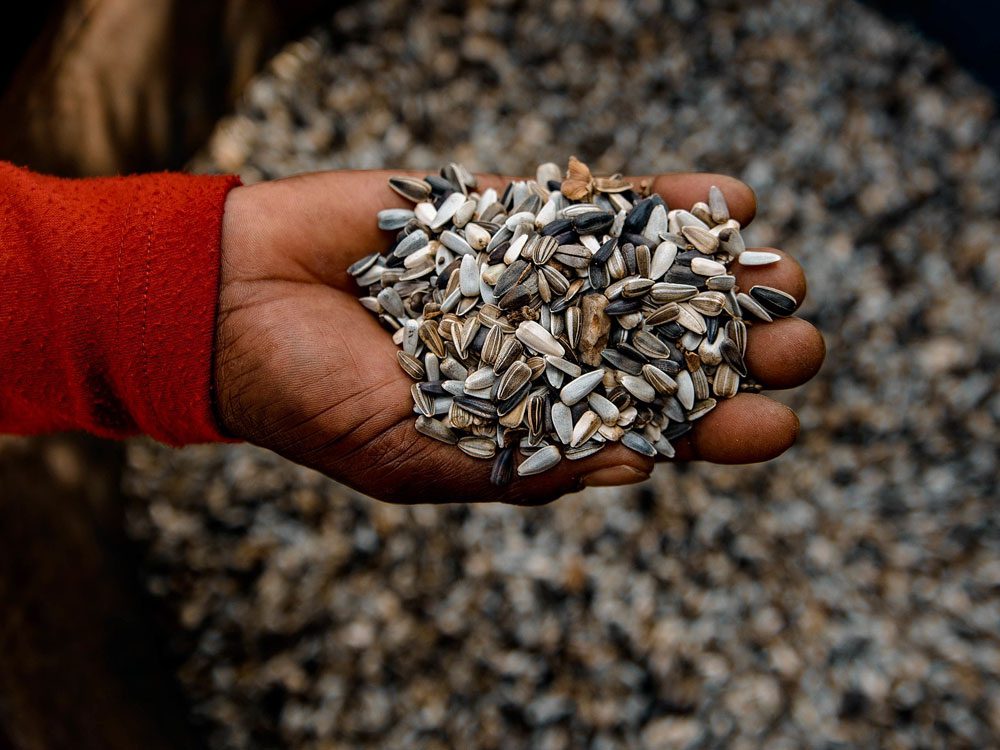
Best Feeder Types:
- Tube Feeders: These feeders have multiple small ports, perfect for dispensing sunflower seeds. They are especially good for attracting smaller birds like finches and chickadees.
- Hopper Feeders: Hopper feeders store seeds in a central reservoir and dispense them as needed. They work well for sunflower seeds, attracting a range of birds from sparrows to grosbeaks.
- Tray or Platform Feeders: These open feeders are versatile and ideal for larger birds like cardinals and blue jays that prefer to eat while perched on a flat surface.
Check out sunflowers bird feeders we recommend: check this
Why Choose This?
Sunflower seeds are the go-to choice for anyone starting with bird feeding due to their broad appeal. The feeder types mentioned ensure you can accommodate a diverse range of bird species.
2. Safflower Seeds: The Cardinal’s Delight
Safflower seeds are high in protein and fat, making them a favorite among cardinals, chickadees, and doves. Interestingly, squirrels and larger birds like grackles tend to avoid safflower seeds, making them a good choice if you’re looking to attract smaller birds without interference.
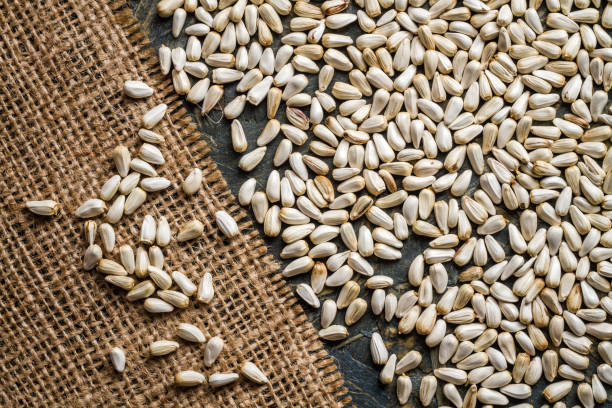
Best Feeder Types:
- Hopper Feeders: These feeders are ideal for dispensing safflower seeds, providing easy access for cardinals and other medium-sized birds.
- Tube Feeders: A tube feeder with larger ports can also be used for safflower seeds, especially if you want to cater to smaller birds.
Check out our bird feeders: check this
Why Choose This?
If your primary goal is to attract cardinals and avoid squirrels, safflower seeds are an excellent choice. These feeder types help create a squirrel-free feeding zone while still attracting a variety of desirable bird species.
3. Nyjer (Thistle) Seeds: A Finch Favorite
Nyjer, also known as thistle seed, is a tiny, high-oil seed that is especially attractive to finches, siskins, and redpolls. Due to the seed’s small size, it requires a specialized feeder to avoid waste.

Best Feeder Types:
- Thistle (Nyjer) Feeders: These are typically tube feeders with very small ports designed specifically for dispensing Nyjer seeds. The ports prevent larger seeds from clogging the feeder and minimize waste.
- Mesh Feeders: A fine mesh design allows birds to cling and pull out the seeds, ideal for finches that enjoy eating in this manner.
Why Choose This?
Nyjer seeds are perfect for attracting colorful finches. Specialized feeders ensure that the tiny seeds are dispensed efficiently, reducing waste and attracting flocks of small, active birds.
4. White Proso Millet: A Sparrow’s Snack
White Proso Millet is a small, round seed that is highly favored by ground-feeding birds such as sparrows, juncos, and doves. It’s also a key ingredient in many mixed birdseed blends.
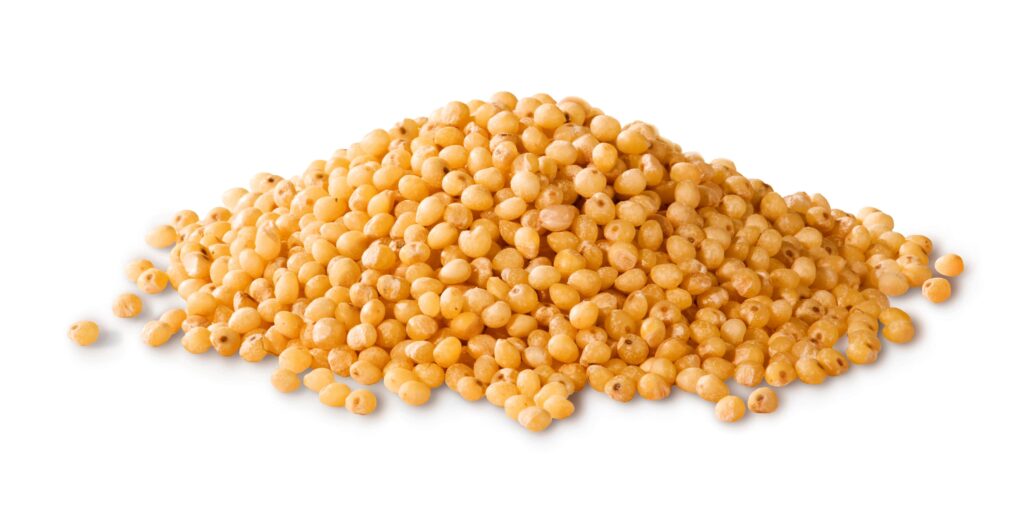
Best Feeder Types:
- Ground or Platform Feeders: These are ideal for white proso millet, allowing ground-feeding birds to access the seeds easily.
- Hopper Feeders: Hopper feeders can also dispense millet effectively, particularly for birds that prefer perching while feeding.
Why Choose This?
White Proso Millet is an excellent choice for those who want to attract ground-feeding species. These feeder types ensure that millet is easily accessible to the birds that prefer feeding at lower levels.
5. Shelled and Cracked Corn: Ideal for Larger Birds
Shelled and cracked corn are large, hearty seeds that are popular with larger birds like jays, crows, and wild turkeys. However, corn can also attract undesirable wildlife, such as raccoons and squirrels.
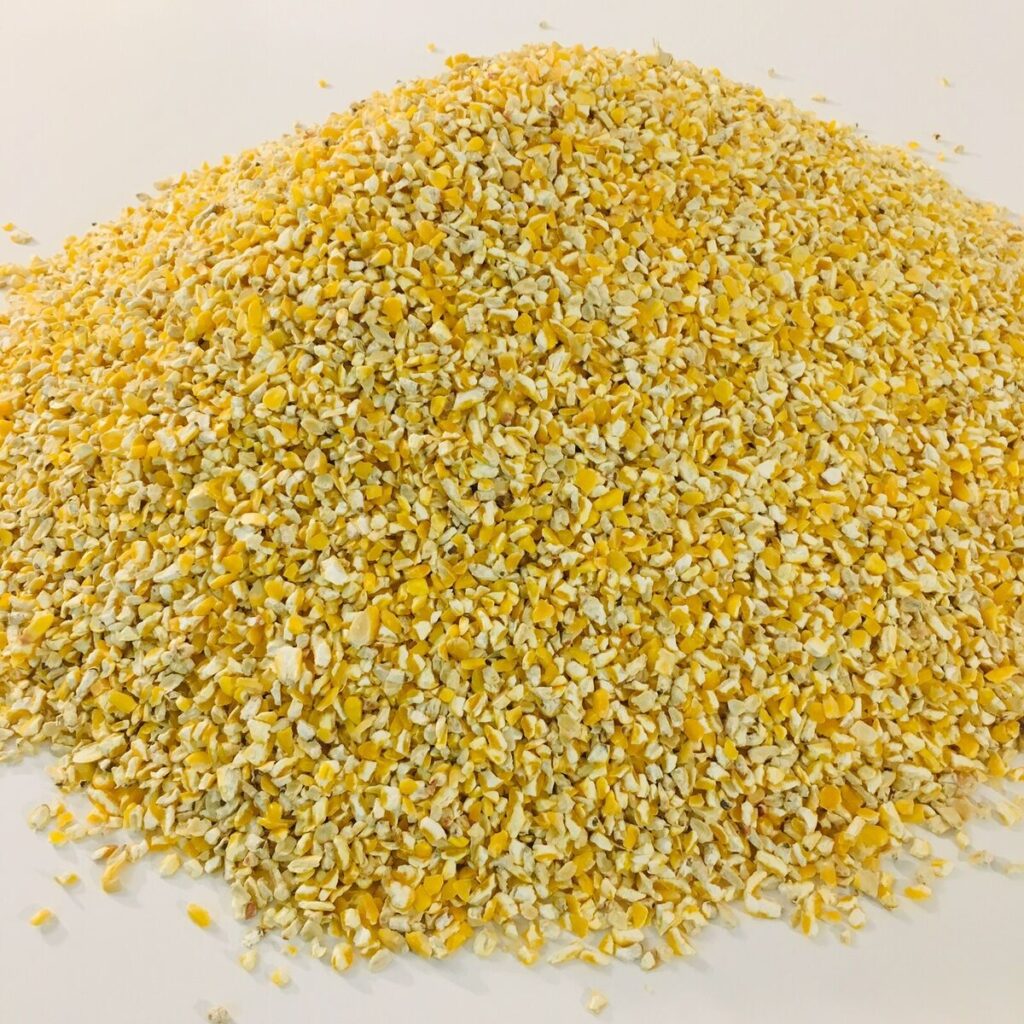
Best Feeder Types:
- Platform or Tray Feeders: These feeders are perfect for larger birds that enjoy eating corn. They provide ample space for big birds to perch and feed comfortably.
- Ground Feeders: If you’re catering to ground-feeding birds like turkeys, a ground feeder is ideal for dispensing cracked corn.
Why Choose This?
Shelled and cracked corn are excellent for attracting larger bird species. These feeder types accommodate the size and feeding habits of these birds, making them a good choice if you want to support a broader range of wildlife.
6. Peanuts: A Protein-Packed Option
Peanuts, whether shelled or unshelled, are a high-protein treat that appeals to a variety of birds, including woodpeckers, jays, and titmice. They can be offered whole or in pieces, depending on the feeder type.
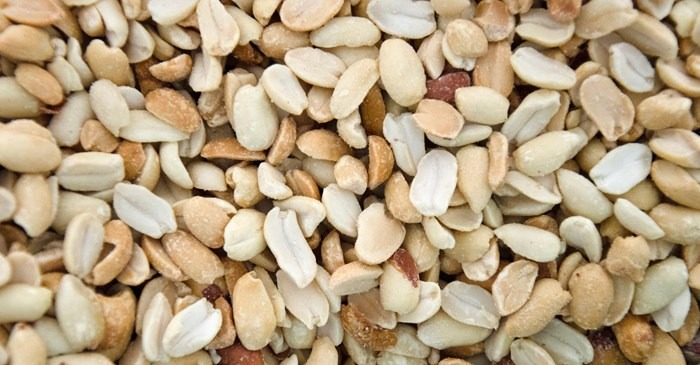
Best Feeder Types:
- Mesh or Wire Feeders: These feeders are designed to hold peanuts securely while allowing birds to peck at them. They’re perfect for woodpeckers and other birds that enjoy clinging while they eat.
- Tray Feeders: A tray feeder can also be used for shelled peanuts, providing a flat surface for birds to access the nuts easily.
Why Choose This?
Peanuts are a versatile and nutritious option for attracting a wide range of birds, especially if you want to see more woodpeckers in your yard. The recommended feeders cater to the specific feeding behaviors of these species.
7. Milo (Sorghum): Best for Ground-Feeding Birds
Milo, also known as sorghum, is a large, reddish seed that is often used as a filler in cheap birdseed mixes. While not as popular as other seeds, it does attract ground-feeding birds like doves, quails, and pheasants.
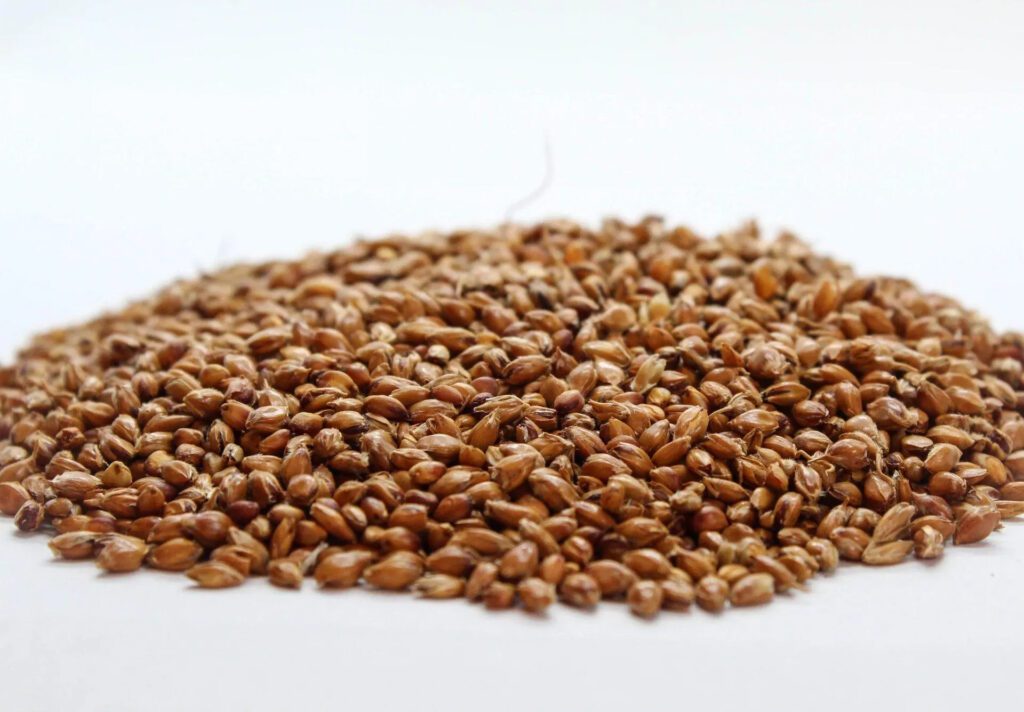
Best Feeder Types:
- Ground or Platform Feeders: These feeders are best for dispensing milo, making it accessible to ground-feeding birds that prefer to forage at lower levels.
Why Choose This?
Milo is best suited for those interested in attracting ground-feeding species or when using a mixed seed blend. Ground or platform feeders provide easy access to these birds.
8. Golden Millet, Red Millet, Flax, and Other Small Seeds: For Mixed Blends
Golden millet, red millet, flax, and other small seeds are often found in birdseed mixes. These seeds attract a variety of smaller birds like sparrows, finches, and buntings.

Best Feeder Types:
- Hopper Feeders: Hopper feeders work well for mixed seed blends, allowing different types of birds to access various seeds.
- Tube Feeders with Small Ports: If your mix contains smaller seeds, a tube feeder with appropriately sized ports will ensure that all seeds are accessible to the birds.
Check out mixed seeds bird feeders we recommend: check this
Why Choose This?
These small seeds are best used in mixed blends to attract a variety of smaller bird species. The feeder types mentioned help distribute these seeds efficiently, making them a good choice for bird enthusiasts looking to attract diverse species.
9. Rapeseed and Canary Seed: Specialist Seeds for Select Species
Rapeseed and canary seed are less commonly used but are particularly favored by finches, canaries, and buntings. They’re smaller, high-energy seeds that are often included in specialty birdseed mixes.
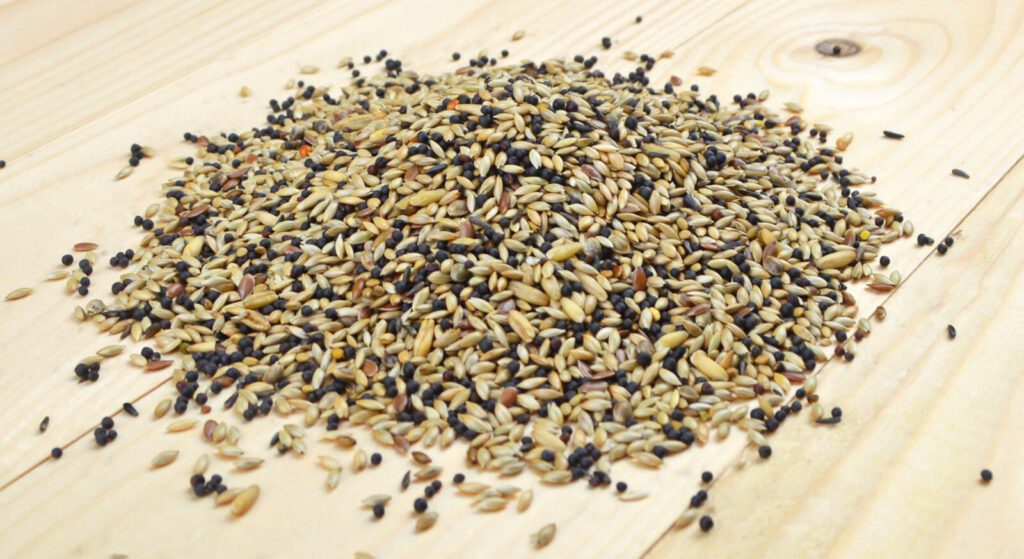
Best Feeder Types:
- Tube Feeders with Fine Ports: These feeders are ideal for dispensing small seeds like rapeseed and canary seed, allowing small birds to feed comfortably.
- Mesh Feeders: A fine mesh feeder also works well, especially for finches that enjoy clinging while they feed.
Why Choose This?
Rapeseed and canary seed are perfect for birdwatchers who want to attract specific species like finches and canaries. The specialized feeders ensure that these small seeds are dispensed efficiently, minimizing waste and attracting the desired birds.
Conclusion
Choosing the right bird feeder by seed type is essential for attracting the specific bird species you want to observe. Whether you’re using sunflower seeds to attract a wide variety of birds, Nyjer seeds to bring in colorful finches, or peanuts to satisfy the woodpeckers, selecting the appropriate feeder is key to a successful bird-feeding experience. By matching the seed type to the best feeder, you’ll create a welcoming environment for your feathered friends, ensuring they return to your yard time and time again.
Investing in the right combination of seeds and feeders will not only bring more birds to your backyard but also enhance your bird-watching experience, allowing you to enjoy the beauty and diversity of local wildlife.
Read more starting guides:
- Beginner’s guide to bird feeders, types and buying tips
- Starting guide for hummingbird feeding
- What to know before you start bird feeding

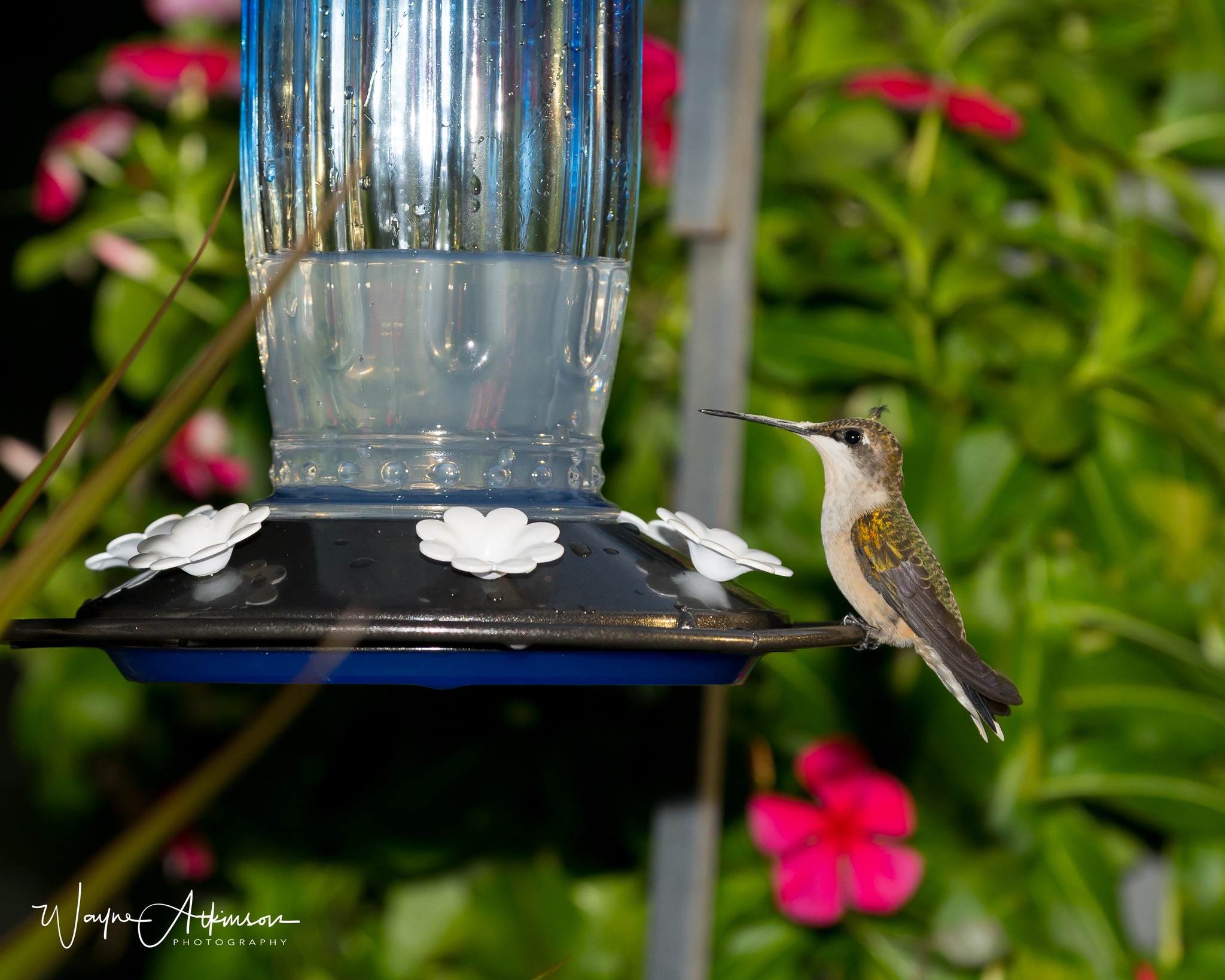
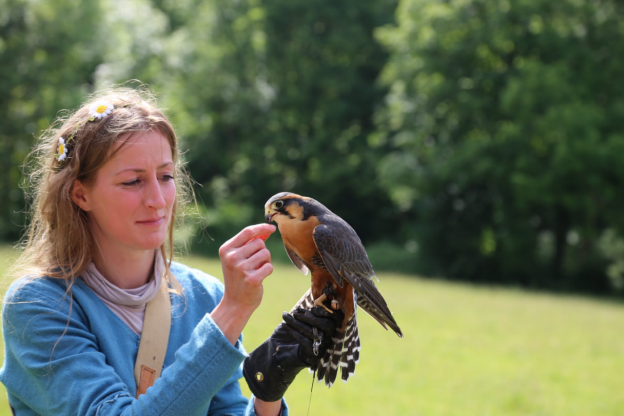
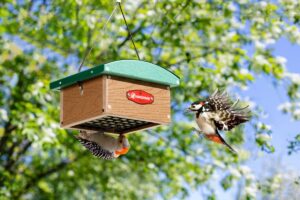
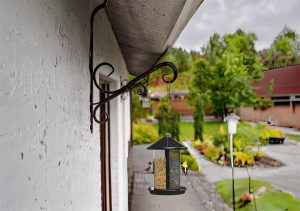


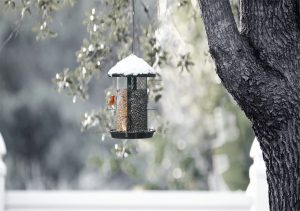
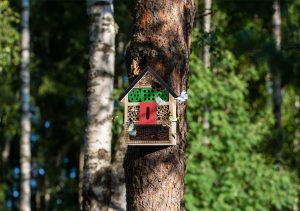
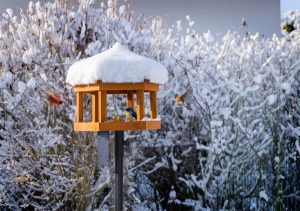
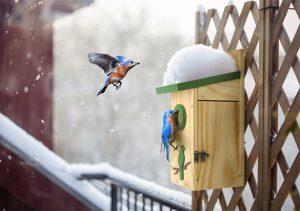
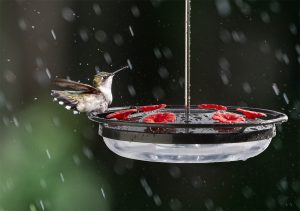
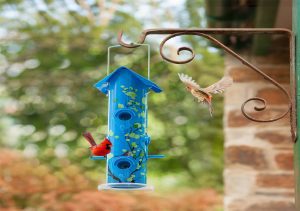
Post Comment